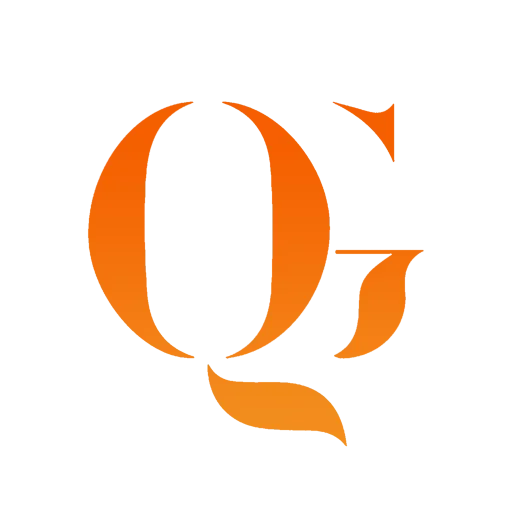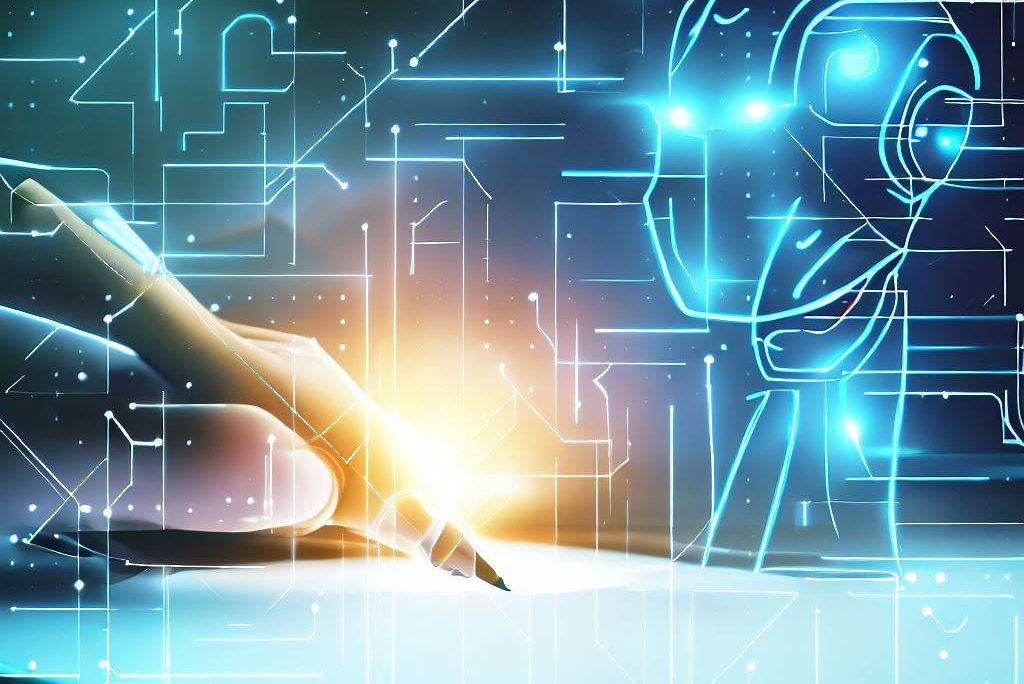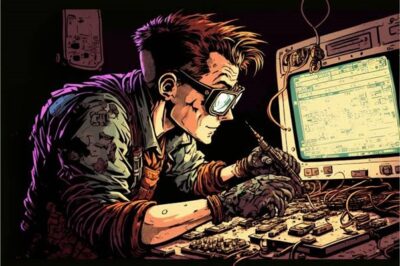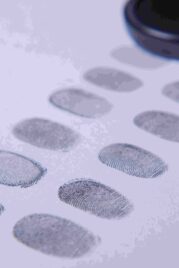AI drawings are graphics or pictures made or updated by a computer programme known as Artificial Intelligence (AI). Instead of a human artist painting the artwork by hand, the AI generates the image automatically using powerful algorithms and patterns.
AI drawings are not just your typical run-of-the-mill artworks. They can be found in all sorts of places—fancy art galleries, dazzling illustrations in books and magazines, eye-catching designs in advertisements, and even in action-packed video games and blockbuster movies!
Interested in learning more about AI drawings ? Let’s dive in !

What Are AI Drawings?
AI Drawings are not mere tools but mischievous muses that bring magic to the creative process. With their clever algorithms and vast knowledge, they absorb the essence of art and form, weaving pixels into masterpieces that reflect your vision.
They go beyond replication, blending elements in unexpected ways and transporting us to imaginary worlds. With a personality of their own, they inspire and push us to explore uncharted artistic territories, unleashing hidden talents and overcoming self-doubt.
The allure lies in their versatility, effortlessly switching between styles and encouraging experimentation. AI Drawings lead us on whimsical journeys, uncovering unexplored paths and untapped creativity. Let them be your artistic confidante, guiding you to breathtaking artwork and empowering your imagination. Embrace the enchantment of AI Drawings and let your creativity soar.
History And Evolution
The origins of AI drawings take us back to the early days of computer graphics, when pioneering academics embarked on a quest to automate the art of creating pictures. But it wasn’t until the emergence of deep learning and neural network advancements, with the likes of generative adversarial networks (GANs), that AI drawings truly took flight, breaking free from the shackles of basic shapes and unleashing their creative potential.
GANs consist of a clever generator and a discerning discriminator. These networks are trained on vast labeled image datasets, allowing them to produce realistic and captivating graphics. But the journey doesn’t end there. Specialized architectures like conditional GANs and progressive GANs have further elevated the control and quality of AI drawings, opening new avenues of artistic expression.
The fusion of AI drawings with techniques such as style transfer has widened the spectrum of aesthetic possibilities, painting a vivid canvas where artistry and technology intertwine. And the quest for improvement continues. Ongoing research delves into attention processes and reinforcement learning, aiming to refine and enhance the generation process, unlocking new levels of creativity.
Popular Methods Of Text-to-Image Generation

As previously discussed in relation to picture generating approaches, let us now take a closer look at how these strategies assist the system in producing images. The popular methods of image generation are :
Image Generation Using GANs
GANs are the dynamic duo of the AI world, engaged in a thrilling game of artistry. A mischievous generator armed with random noise competes against a discerning discriminator. The generator refines its skills, creating realistic images, while the discriminator sharpens its senses to spot fakes. With each iteration, neural networks and backpropagation optimize the models, pushing the generator’s artistry to new heights. GANs have transformed computer vision, enabling lifelike simulations, mind-bending deep-fake films, and breathtaking artworks.
They are audacious artists, blurring the line between reality and illusion. GANs revolutionize the creative landscape, challenging what’s possible and bringing us closer to a world where reality and generated art merge.
Image Generation Using Diffusion Models
Diffusion-based picture production is a fascinating technique in artificial intelligence (AI). It works by gradually improving images while keeping their original look intact. Fancy models like autoregressive and flow-based ones are trained on big datasets to learn patterns in pictures. Then, they can create new images by mixing things up. The reverse diffusion step takes the final image and makes it look like the original one but even better.
This technique has been amazing at making all sorts of realistic pictures in art, design, and entertainment. It’s a huge step forward in AI-generated art! Imagine AI and creativity joining forces to make stunning images come to life, opening up endless possibilities for artists and anyone who loves pictures. It’s like breathing life into pixels and showing us the incredible things AI can do!.
Shift From GANs To Diffusion Models
For developing graphics based on text descriptions, there has recently been a move from employing GANs to diffusion models. GANs function as a creative team, with one portion creating pictures and the other judging their realism. Diffusion models, on the other hand, gradually improve an original image by introducing controlled noise and eventually smoothing it out, resulting in clearer and more detailed pictures. Diffusion models offer several advantages! They provide us greater control over the photos we make, have superior quality, and retain more information. They’ve been employed in a variety of fields to create unusual and realistic visuals.
This shift in methodology demonstrates how the realm of making visuals from text is changing. Diffusion models are becoming more popular because of their capacity to generate high-quality visuals with precise details.
The Future of AI Drawings: How Text-to-Image Generation is Changing the Art World

Let’s dive into the exciting world of text-to-image generators! Here are some popular and advanced options that you can start using right away:
DALLE 2
Created by the brilliant minds at OpenAI, DALLE 2 is a user-friendly picture generator. They even offer 50 free credits upon registration, and an additional 15 free credits each month. If you need more, you can purchase 115 credits for just $15. With API prices starting at $0.016 per picture, it’s a fantastic choice.
Midjourney
Known for its impressive output quality, Midjourney is an AI picture generator that operates through Discord. It offers various subscription tiers to suit your needs. Starting at $10 per month, you’ll get around 200 photos every month along with commercial use rights.
DreamStudio (Stable Diffusion)
If personalization and control are what you seek, DreamStudio powered by Stable Diffusion AI is the way to go. It provides 100 free credits upon registration, and you can choose from several credit packages starting at $10 for 1,000 credits.
Lexica.art
Another option that excels in text-to-image generation is Lexica. With Lexica, you have the flexibility to customize and control your AI drawings based on the instructions you provide. You can adjust the quality and even contribute your own graphical inputs. The best part? Lexica has a free tier that allows you to download 100 AI photos every month.
These text-to-image generators open up a world of creativity, enabling you to bring your ideas to life. So, pick the one that resonates with you, unleash your imagination, and watch as AI transforms your words into stunning visuals.
Ethical Considerations And AI Drawing Challenges
The rise of AI-powered artwork brings ethical considerations to the forefront. Issues of authorship, ownership, and intellectual property emerge, complicated by the involvement of machines in the creative process.
Cultural biases and representation concerns can inadvertently seep into AI-generated paintings, while the potential for misuse and manipulation raises questions of authenticity and trust. Privacy and consent become crucial as AI systems rely on vast amounts of data.
The blurred lines of attribution and plagiarism further complicate matters. Addressing these ethical challenges requires establishing norms, legal frameworks, and collaboration among AI developers, artists, lawmakers, and ethicists. By proactively navigating these issues, we can unlock the potential of AI drawings while upholding fairness, transparency, and societal values, fostering a future where art and technology coexist ethically.
Future Possible Developments
Effect Of Multimodal Integration
Multimodal integration in AI drawings combines various types of information, like text and images, to create stunning artwork. AI models are trained using deep neural networks, learning to understand the connections between words and visuals. With the possibility of merging different modalities, AI systems can generate drawings that exhibit a deeper understanding of the input data.
This advancement brings us closer to a future where machines create art comparable to human artists. Multimodal integration enhances the creativity and versatility of AI-generated drawings, offering new possibilities for realistic and captivating artwork.
Enhanced Style Transfer
Style transfer is a process that mixes the style of one artwork with the substance of another, resulting in breathtaking and one-of-a-kind masterpieces. Furthermore, AI may create whole new artworks by learning from large volumes of current work. This merger of artificial intelligence and art will push the frontiers of creativity, providing new insights and limitless possibilities.
AI drawings allow you to start on an exciting voyage of exploration and creativity, embracing this great era of improved creative possibilities, whether you are an artist or an art admirer.



